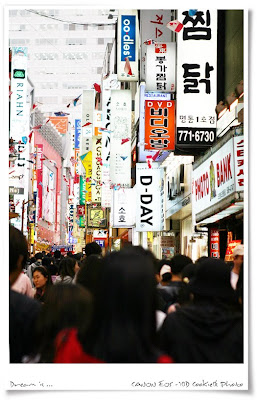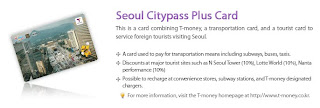
Bulguksa Temple is the representative relic of Gyeongju and was designated as a World Cultural Asset by UNESCO in 1995. The beauty of the temple itself and the artistic touch of the stone relics are known throughout the world.
Bulguksa Temple was built in 528 during the Silla Dynasty, in the 15th year of King Beop-Heung's reign (514~540). It was called Hwaeom Bulguksa Temple or Beopryusa Temple back then. In 751, under King Gyeong-Deok (reign 742∼765), Kim Dae-Seong
(700~774) started rebuilding the temple and finished in 774, under King Hye-Gong (reign 765~780). After 17 years of construction, the name 'Bulguksa' was finally given to the temple.
The name 'Bulguksa' was kept through numerous renovations of the temple from the Goryeo Dynasty (918~1392) to the Joseon Dynasty (1392~1910). But during the Imjinwaeran War (the war provoked by Japan's invasion, 1592~1598) the wooden building was burned, 819 years after first being established.
From 1604, during Joseon Dynasty (King Seon-Jo's 37th year) the reconstruction started again and was renovated approximately 40 times till 1805, to the reign of King Sun-Jo (1790~1834). But the temple still suffered many robberies and damage afterwards.
In 1969, the Bulguksa Temple Restoration Committee was formed and Mulseoljeon, Gwaneumjeon, Birojeon, Gyeongru and Hoerang, which were merely left as grounds of the original buildings, were rebuilt in 1973. Other old or broken sites such as Daewungjeon, Geukrakjeon, Beomyeongru and Jahamun were repaired.
The Bulguksa Temple of today has many cultural relics preserved within it, such as Dabo-tap (National Treasure No.20), Sukga-tap (National Treasure No.21) Yeonhwa-gyo* Chilbo-gyo (National Treasure No.22), Cheongun-gyo*Baekun-gyo (National Treasure No.23) Golden Seated Vairocana Buddhist Figure (National Treasure No.26), Golden Seated Amita Figure (National Treasure No.27) and Sari-tap (National Treasure No.61) among others.
The Dabotap (Many Treasure Pagoda) and Seokgatap (Sakyamuni Pagoda) are major pagodas of Korea. Designated as Korean National Treasures in 1962, the two pagodas, each measuring 10.4 meters (Dabotap) and 8.2 meters (Seokgatap), stand on the east and west sides of the yard separating Daeungjeon (the hall housing the Shakyamuni Buddha) and Jahamun (Mauve Mist Gate).
The three-story Seokgatap, on the east, has two stereobates and is in traditional Korean style. Dabotap is an octagonal pagoda standing on a cruciform base with stone staircases on all four sides and a railing. Given its superior craftsmanship, it is difficult to imagine that it was constructed of stone. Unlike Seokgatap, Dabotap has survived the passage of time with its original structure still intact. Both outstanding examples of 8th-century Unified Silla architecture, the two pagodas skillfully balance the square, octagonal, and circle in one design.
Moving between Daeungjeon and Geungnakjeon (both prayer halls), visitors cross the Cheongungyo (Blue Cloud Bridge) and Baegungyo (White Cloud Bridge) to the east, and Yeonhwagyo (Lotus Flower Bridge) and Chilbogyo (Seven Treasure Bridge) to the west. Cheongungyo and Baegungyo are actually stairways, not bridges. The lower portion, Cheongungyo, has 17 steps and the upper part, Baegungyo, has 16. These steps lead to Jahamun, which is the gate to Daeungjeon (Sakyamuni Buddha Hall). These bridge-like stairways symbolically connect the mundane world below and the world of Buddha above. Some say that they symbolize life of a young man and of an old man. The construction of the stairway in the shape of a bridge is unique, and these national treasures are the only such structures that have survived intact from the Silla era.
To the west, an 18-step stone staircase leads to Anyangmun (Pure Land Gate). The lower ten-step portion of that staircase is called Yeonhwagyo, while the upper part with eight steps is Chilbogyo. It is said that only those who reached enlightenment could use these stairs. Both structures are smaller than Cheongungyo and Baegungyo, but the design and structure are quite similar. Most of the lotus-blossom carvings that beautified Yeonghwagyo have been lost over time, and the passage is currently restricted to visitors. These are major historical components of Bulguksa Temple, as well as National Treasures.
As one faces Cheongungyo and Baegungyo, Beomyeongnu (Pavilion of Mount Meru) is on the left. Originally built in 751 CE, the pavilion was damaged in 1593 by the Japanese during the Imjin War and restored in two separate projects during the Joseon Dynasty. A restoration project undertaken in 1973 resulted in the current structure, which is smaller than the original. The pavilion has a wide lower portion, a narrower middle above the stone pillars, and an upper portion as wide as the lower portion. Particularly unique are the stacked pillars, using 8 differently shaped stones, and their placement, facing each of the four directions. Today, the pavilion houses a drum atop a turtle structure.
Operating Hours
Winter Season (Nov. ~ Feb.) 07:00 ~ 17:00
Summer Season (Mar. ~ Oct.) 07:00 ~ 18:00
Admission Fees
Adults(ages over 19) - 4,000 won
Youth(ages 13-18) - Individual 3,000 won / Group 2,500 won
Children(ages 7~12) - Individual 2,000 won / Group 1,500 won
Children(ages under 7) - Individual Free / Group 1,000 won
Free - ages over 65, disabled visitors
* Group - 30 or more people
Facilities for the Handicapped
Wheel chair free rental service, disabled parking lot, disabled toilet, the entrance for disabled visitors
Baby Stroller Rentals
Available (free)
Local Transportation
At Gyeongju Intercity Bus Terminal, Express Bus Terminal or Gyeongju Train Station, take the Bulguksa Temple bound bus (Bus No.10, No.11). Get off at Bulguksa Temple Bus Stop (40 minutes ride).
Taxi takes 20~25 min.
Related Tour Packages
GLANCE AT KOREA
Destination: Seoul, Gyeongsangbuk-do, Busan, Jeju-do
Duration: 5Day(s) 4Night(s)
3D2N Gyeongju & Busan [CT3-4]
Destination: Busan, Gyeongsangbuk-do
Duration: 3Day(s) 2Night(s)
Address : Gyeongsangbuk-do Gyeongju-si Jinhyeon-dong 15
www.bulguksa.or.kr (Korean only)
www.jikimi.cha.go.kr/english (Korean, English)















